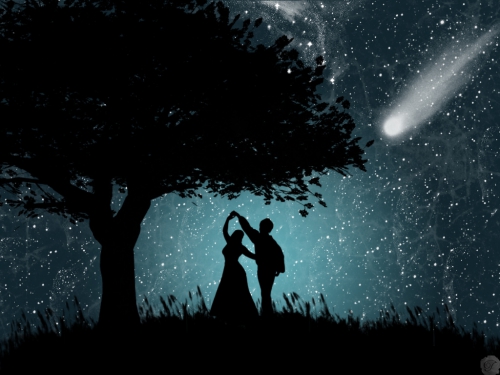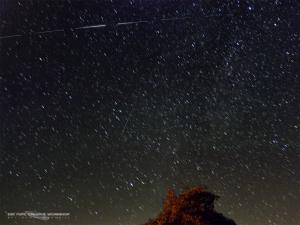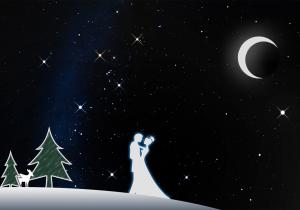
Stargazing Nights - Holiday Stargazing
- Where:
- Frosty Drew Observatory
- When:
- Friday December 22, 2017 6:00 p.m. - 9:00 p.m.
- Cost:
- $1 Suggested Donation per Person
Tonight is our Holiday Stargazing Night event at Frosty Drew Observatory, and for the third consecutive week, the forecast is calling for full clouds, rain, or snow. We need a break from the relentless Friday night weather of the past two years. We saw a brief stint of clear Fridays during autumn, though it hardly makes up for the weather crash of 2016 - 2017. Unfortunately, forecasts for full clouds, rain, or snow will keep the Observatory telescopes closed.
We will open the Sky Theatre tonight from 6:00 p.m. - 9:00 p.m. with a showcase of celestial objects photographed at Frosty Drew Observatory and an open discussion on general astronomy. We will return to our regular Stargazing Nights schedule on Friday, December 29th at 6:00 p.m.
---------------------
Weekly Happenings
Scott MacNeill
Though forecasts through the weekend are not looking all that great for our area. If you have clear skies, take a moment to enjoy the beautiful waxing crescent Moon that has been rocking our evening skies this past week. Being that the Winter Solstice happened on Thursday, December 21st, the ecliptic (path the Sun takes across the sky) is at its highest during the nighttime hours for the year. Since the Moon orbits Earth inclined 5° to the ecliptic, the winter months offer the highest views of the Moon in the night sky. Add in the super early sunset times, and the Moon has been in fabulous viewing. Step outside after sunset and look to the southwest to catch a view of the crescent Moon. Phases less than 50% will offer stunning views of Earthshine, which is when the night side of the Moon is visible via a soft glow. This happens due to sunlight reflecting off of Earth and onto the night side of the Moon.
On Sunday, December 24th take a moment to step out and catch an excellent Iridium satellite flare happening 27° over the SSW sky. Happening at 5:18 p.m. EST, the Iridium 46 satellite will quickly brighten to magnitude -5 (around the brightness of Venus), then fade back out. Iridium satellite flares happen due to three highly reflective communications antennae positioned at 40° angles around the satellite. As the satellite rotates in its orbit, one of the antennae will reflect sunlight back at Earth like a beam, creating a 6 mile wide spot that moves along the ground. If you are inside the diameter of that spot, you will witness a flare in the sky. The closer you are to the center of the spot, the brighter the flare. Step outside just before 5:18 p.m. and look 27° up from the SSW horizon to catch the flare. Add a little orbital mechanics to your holiday festivities with a bright Iridium Flare and show off your geek cred to your guests.
Save the Date: New Years Eve Stargazing at Frosty Drew Observatory will happen on Sunday, December 31st from 7:00 p.m. - 9:00 p.m. (weather permitting) following the annual bonfire held in Ninigret Park by the Charlestown Parks and Recreation, which starts at 4:30 p.m. Put the cosmos on your list of fabulous New Year’s celebrations with a stop in at Frosty Drew Observatory to kick start your night.
Happy Holidays!
-Scott



